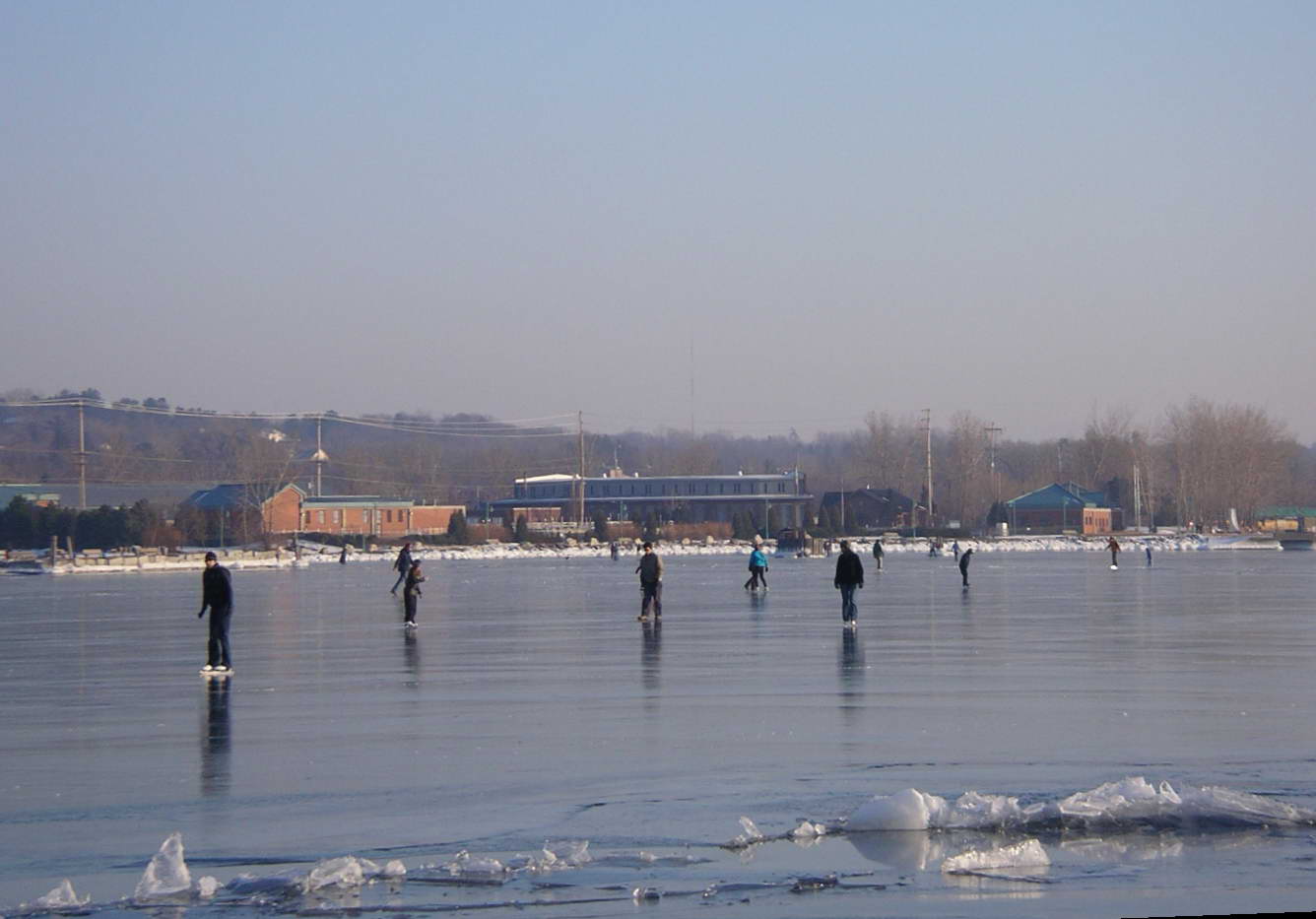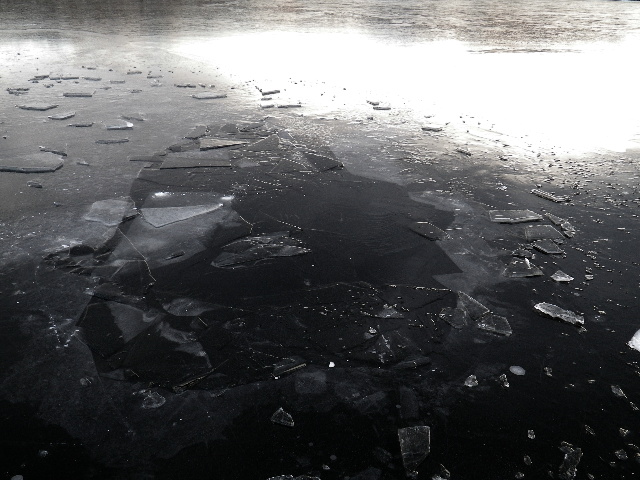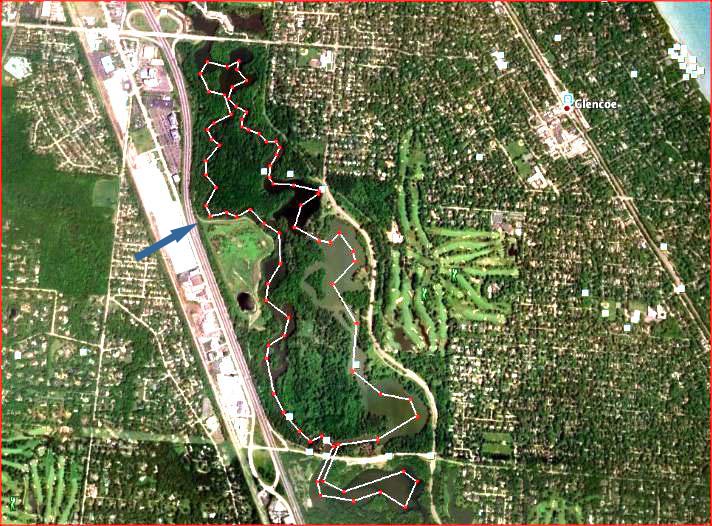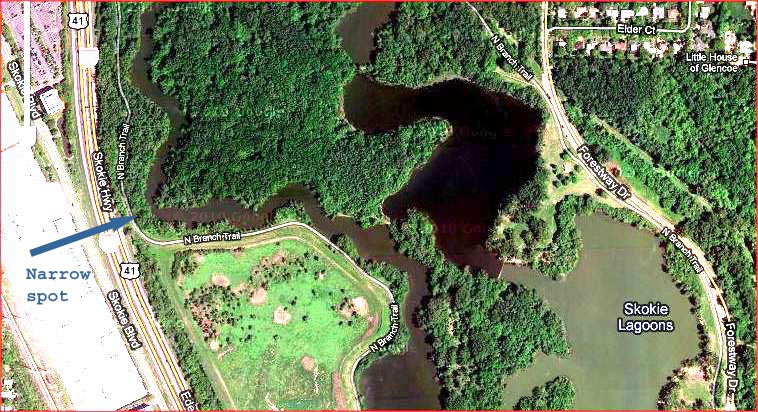 Ice Fever sufferers on Burlington Harbor (VT), February 2005
Ice Fever sufferers on Burlington Harbor (VT), February 2005
Ice Fever
The Disease of Black Ice
A Dutch friend told me that when the ice comes in in Holland, half the population gets to ice fever and the other half wonders what all the fuss is about. Ice fever is a particular problem for people who seek the smoothest, hardest ice. Of course it is also the newest, thinnest and some of the least reliable ice. The affliction has also been called 'The call of the ice siren' and 'Rapture of the ice'
Symptoms and indicators:
- A distracted demeanor.
- Suspension of normal caution about thin ice.
- Patient often found hurriedly sharpening skates or iceboat runners or hunting for fishing gear.
- Usually associated with a strong cold snap.
- Most common in December and January.
- May involve not showing up for work or other obligations.
Treatment and prognosis:
- Forget chicken soup: just make sure the victim has their ice claws, a throw rope, and a couple of buddies with them (hopefully with a less severe case of the fever).
- The advance purchase of cold water protective clothing is highly recommended for people who are vulnerable to this affliction. Encouragement from a spouse or friend may be needed as people with ice fever generally have a diminished appreciation of the mortality risk associated with thin ice. Protective clothing is especially important for older and/or thinner ice fever victims.
- Symptoms usually subside abruptly with a significant snowfall or a warm spell.
- Generally a full recovery can be expected in a few days.
- See the rest of the lakeice site for other suggestions for minimizing the adverse consequences of the disease.
The following is a series of accounts of people afflicted with ice fever. Most of these articles appeared in the 2011 blog.
*********************************************************
THIN ICE-The Ice Siren Calls
Posted on the LakeIce 2011 Blog Late December 2010
 The hole photographed two days later. Photo by Richard Saltenstall.
The hole photographed two days later. Photo by Richard Saltenstall.
This event event involved two friends, one of whom has lots of experience with ice and the other less so. They were confronted with a gorgeous black ice sheet in the 1-1/2 to 1-3/4” range. The ice siren called and they chose not to resist. One had a dry suit and skates and one had a float coat, skates and a Skimbat (hand held sail). The ice had some thinner areas they did not discover when they did their ice checking. The person with the Skimbat found some ice around 1-1/8" and broke through. He was able, reportedly after several attempts, to rescue himself with his claws. He did not have a whistle and was otherwise not able to get the attention of his skating partner until after he had rescued himself. Afterwards the gentleman who swam had great things to say about the value of his float coat and his future intent to wear a wetsuit.
I suspect the dry suit that one of them was wearing may have contributed to their decision to go out on ice they otherwise would have considered too thin. The prospect of a great day on the ice lures many of us onto ice that turns out to be worse than we led ourselves to believe. To guard against the call of the ice siren (ice fever), a good question to ask yourself as you stand at the edge of a tempting ice sheet is: What problems might this ice have and how well am I prepared to deal with them if things go wrong? Thankfully, as things turned out in this case, the two skaters were sufficiently prepared.
Bob
PS: The details of this event were provided by a third party who investigated the scene shortly afterwards. Certain details have been left out to protect the afflicted.
*************************************************************
******************************************************************
The following are some other Ice Fever Accounts:
Rapture of the Ice and Post Immersion Stress Syndrome (PISS) by Lloyd Roberts
Click here for Big New Ice page: It contains couple of accounts of the attractiveness and liabilities of mid-late season huge black ice sheets on Lake Champlain and Lake Vattern in Sweden.
In Sweden in January 2011 two skaters were out at sunset on ice on the Kattegatt Archipelago, an arm of the North Sea off Gothenburg. They were stranded when a large vessel (icebreaker?) broke the channel and the ice for a considerable distance on either side. These lucky skaters were rescued in 12 minutes (thanks to their cell phone and a nearby, helicopter equipped, rescue unit). The rescuers complimented the couple for not trying to jump between the ice pieces. Typical rescue times are more like 45 min to hours depending on the situation. Click here for the story in Swedish (the English version has been removed from the server it was on). This story is another good reason to bring fully charged,waterproofed cell phone, some sort of light and, for a place like this, a chemical or laser flare.
 2011 LakeIce Blog: Saturday, January 22, 2011
2011 LakeIce Blog: Saturday, January 22, 2011

